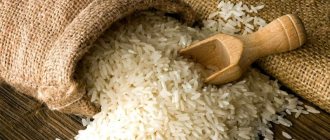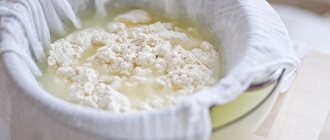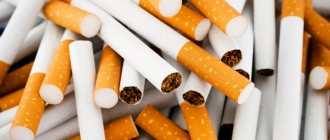Regulatory requirements according to GOST for product storage
Checking eggs for freshness
The principles of product storage and the permissible period are determined by standards.
This is GOST 31654-2012 “Chicken eggs for food - technical conditions”, which provides for the following shelf life of eggs:
- Dietary - no more than a week.
- Dining rooms:
- from -2 to 0 degrees - no more than 3 months (90 days);
- from 0 to +20 degrees - no more than 25 days.
What is the shelf life of a chicken egg in the refrigerator?
The product can be stored in the refrigerator for up to three months.
There are several factors that influence safety. Placement in the refrigerator door predetermines frequent contact with warm air.
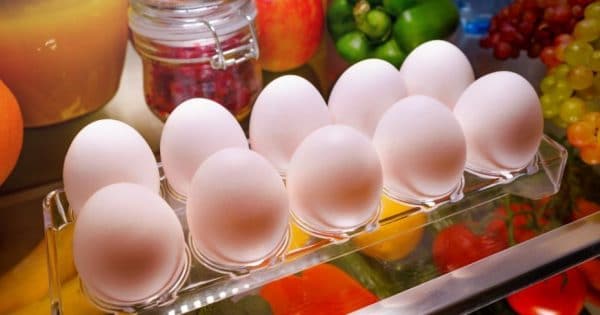
The product can be stored in the refrigerator for up to three months
Consequently, the product will spoil faster. Therefore, it is better to store the product directly on the shelf. It is also recommended to move pallets and containers away from the walls to avoid freezing from the devices working there.
Attention! Eggs cannot be stored in the freezer, or outside! Only pre-separated yolks can be frozen.
The shelf life of boiled chicken eggs expires quite quickly. They need to be kept cold and consumed as soon as possible after preparation: hard-boiled - up to 5 days, soft-boiled - up to 2 days.
How long do boiled eggs last?
If for raw eggs the maximum shelf life is two months, then for cooked eggs it is significantly reduced. There is no need to prepare them for future use. You can always prepare a fresh dish, even while on a camping trip.
How long boiled quail eggs are stored in the refrigerator and at room temperature is a question of interest to housewives. It is advisable to eat the product in the first hours, especially if it is in the sun. When taking eggs with you on a hike or to work, you need to know that they won’t last long without a refrigerator, and it’s better to start your meal with them.
Every housewife knows that boiled foods last longer, which cannot be said about quail eggs. Their presence at room temperature is limited to 12 hours. The shelf life of quail eggs in the refrigerator can be up to 7 days, provided that the shell is not damaged. Cleaned or broken, they can last about four days. Only hard-boiled eggs keep well. To achieve this, you need to let the water boil for at least 10 minutes.
How and for how long to store eggs at room temperature
It happens that you bought eggs, but there is no refrigerator. It is quite possible to keep them fresh indoors.
To do this, you need to follow a number of rules:
- In winter, do not place it near a heating radiator, as increased temperatures shorten the shelf life.
- During the warm season, you need to find a cool, dark place.

Be sure to read:
Fertilizer from chicken manure: composition and use, how to dilute it for feeding
Temperatures above +20 degrees and below 0 Celsius are unacceptable.
Attention! Temperature changes significantly reduce the shelf life of eggs. Regardless of the location, in the cold or indoor conditions, the constancy of this factor should be observed.
The shelf life of homemade eggs is considered longer than that of store-bought eggs.
Storage time
According to GOST standards, the shelf life of quail eggs at temperatures from zero to eight degrees reaches 30 days. This period is minimal, since in fact the product can be preserved much longer. When refrigerated, the delicacy will remain fresh for 60 days. Well, at room temperature, eggs can really “live” for only one month.
Whatever the shelf life of quail eggs, when purchasing them it is always recommended to pay attention to the date of manufacture and the presence of a seal confirming their good quality. It is best to buy goods in stores with an impeccable reputation. But if the consumer is confident in the integrity of the farmers he knows, then he can make a purchase from them.
When stored for a long time, quail eggs lose their weight and over time can completely dry out to an almost weightless state.
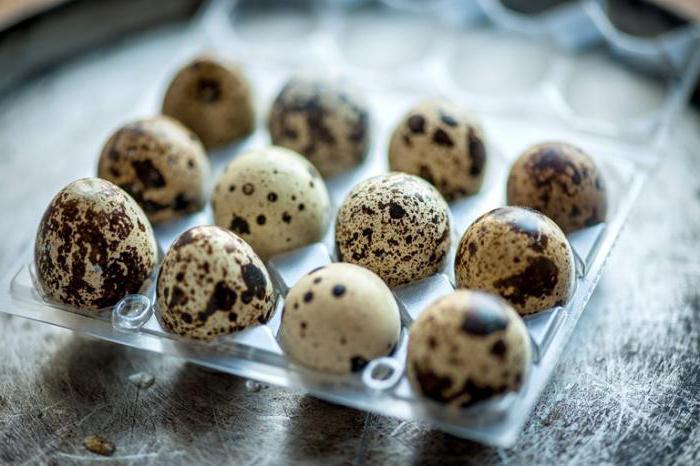
What does the date on an egg package mean?
In the Russian Federation, there are two categories of eggs: “D” - dietary and “C” - table.
Category differences:
- Diet egg is recommended for diet and children's diet. These are products that are no more than a week old from the day they were produced. A red stamp “D” is placed indicating the date of sorting. They count from it.
- The category of table eggs is marked with a blue stamp, the letter “C” and is sold 25 days after production. Indicating the date on the shell is not required. But in this case it must be marked on the packaging. Counted from the day of production (laying by the chicken).
7 days after this point (not counting the first day), dietary products are transferred to the table category through an act.
In addition to category and freshness information, labeling stamps may include additional information.
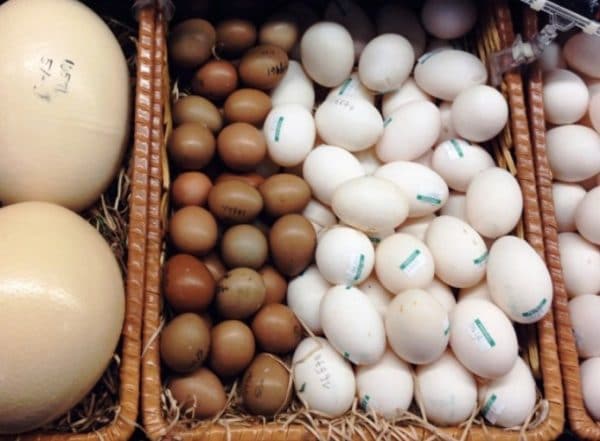
Temperature changes significantly reduce the shelf life of eggs
For example, this is the date of sorting, which differs from the moment the hen laid eggs by no more than a day. They also indicate the expiration date, the name of the manufacturer and its product logo.
There are also 5 weight categories, which are marked with numbers from 1 to 3 or with the letters “O”, “B”:
| Category | Weight, in grams |
| B - highest | From 75 and more |
| O - selected | 65-74,9 |
| C1 - first | 55-64,9 |
| C2 - second | 45-54,9 |
| C3 - third | 35-44,9 |
For example, C3 is a table egg of category 3, and “DO” is a selected dietary product.
Advice! When purchasing eggs, be sure to check the packaging date!
Useful video
Video about the shelf life of eggs:
2.3.2. FOOD RAW MATERIALS AND FOOD PRODUCTS
Read more The basis for canceling the adoption of a child is
SanPiN 2.3.2.1324-03
1. Developed by:
State Research Institute of Nutrition of the Russian Academy of Medical Sciences (V.A. Tutelyan, A.K. Baturin, S.A. Sheveleva, N.R. Efimochkina, I.B. Kuvaeva, S.A. Khotimchenko, I.Ya. Kon, M.M. Levachev, V.B. Spirichev, S.N. Kulakova, L.N. Shatnyuk), Department of State Sanitary and Epidemiological Supervision of the Ministry of Health of the Russian Federation (A.I. Petukhov, I.V. Svyakhovskaya, V.N. Bratina. ), Federal Center for State Sanitary and Epidemiological Surveillance of the Ministry of Health of the Russian Federation (A.A. Ivanov, N.S. Krivopalova). Prepared taking into account the comments and suggestions of specialists from the State Sanitary and Epidemiological Supervision centers in the city. Moscow, and St. Petersburg, Moscow, Leningrad and Rostov regions.
2. Recommended
Commission on State Sanitary and Epidemiological Standards under the Ministry of Health of Russia.
3. Approved
Chief State Sanitary Doctor of the Russian Federation May 21, 2003
4. Put into effect
from June 25, 2003 by resolution of the Chief State Sanitary Doctor of the Russian Federation dated May 22, 2003 No. 98.
5. Registered
at the Ministry of Justice of the Russian Federation on June 6, 2003. Registration number 4654.
6. Introduced to replace
SanPiN 42-123-4117-86 “Conditions and storage periods for highly perishable products”, approved on June 20, 1986.
Federal Law “On the Sanitary and Epidemiological Welfare of the Population”
“State sanitary and epidemiological rules and regulations (hereinafter referred to as sanitary rules) are normative legal acts establishing sanitary and epidemiological requirements (including criteria for the safety and (or) harmlessness of environmental factors for humans, hygienic and other standards), non-compliance with which creates threat to human life or health, as well as the threat of the emergence and spread of diseases” (Article 1).
“Compliance with sanitary rules is mandatory for citizens, individual entrepreneurs and legal entities” (Article 39).
“For violation of sanitary legislation, disciplinary, administrative and criminal liability is established” (Article 55).
Federal Law “On the Quality and Safety of Food Products”
“Requirements for the nutritional value of food products, the safety of food products, materials and products, the safety of the conditions for their development, production, production and circulation, the safety of services provided in the retail trade of food products, materials and products in the field of public catering are established by the relevant sanitary rules and norms” (Article 9).
Ministry of Health of the Russian Federation
CHIEF STATE SANITARY DOCTOR OF THE RUSSIAN FEDERATION
On the implementation of sanitary and epidemiological rules and regulations SanPiN 2.3.2.1324-03
Based on the Federal Law “On the Sanitary and Epidemiological Welfare of the Population” dated March 30, 1999 No. 52-FZ and the Regulations on State Sanitary and Epidemiological Standards approved by Decree of the Government of the Russian Federation dated July 24, 2000 No. 554
Introduce sanitary and epidemiological rules and regulations “Hygienic requirements for shelf life and storage conditions of food products. SanPiN 2.3.2.1324-03”, approved by the Chief State Sanitary Doctor of the Russian Federation on May 21, 2003, since June 25, 2003.
G. G. Onishchenko
Ministry of Health of the Russian Federation
CHIEF STATE SANITARY DOCTOR OF THE RUSSIAN FEDERATION
About the cancellation of SanPiN 42-123-4117-86
Based on the Federal Law “On the Sanitary and Epidemiological Welfare of the Population” dated March 30, 1999 No. 52-FZ and the Regulations on State Sanitary and Epidemiological Standards approved by Decree of the Government of the Russian Federation dated July 24, 2000 No. 554
Since the introduction of sanitary and epidemiological rules and regulations “Hygienic requirements for shelf life and storage conditions of food products. SanPiN 2.3.2.1324-03”, as of June 25, 2003, the “Conditions and shelf life of especially perishable products” shall be considered invalid. SanPiN 42-123-4117-86”, approved on June 20, 1986.
G. G. Onishchenko
Chief State Sanitary Doctor of the Russian Federation, First Deputy Minister of Health of the Russian Federation
G. G. Onishchenko
Date of introduction: June 25, 2003
2.3.2. FOOD RAW MATERIALS AND FOOD PRODUCTS
Hygienic requirements for shelf life and storage conditions of food products
Sanitary and epidemiological rules and regulations
These sanitary and epidemiological rules and regulations (hereinafter referred to as the sanitary rules) were developed in accordance with the Federal Laws “On the Sanitary and Epidemiological Welfare of the Population” dated March 30, 1999 No. 52-FZ (Collected Legislation of the Russian Federation, 1999, No. 14 Art. 1650); “On the quality and safety of food products” dated January 2, 2000 No. 29-FZ (Collection of Legislation of the Russian Federation, 2000, No. 2, Art. 150); “Fundamentals of the legislation of the Russian Federation on the protection of the health of citizens” dated July 22, 1993 (Vedomosti of the Congress of People's Deputies of the Russian Federation, 1993, No. 33, Art. 1318), Decree of the Government of the Russian Federation dated July 24, 2000 No. 554 “On approval of the Regulations on state sanitary and epidemiological service of the Russian Federation and provisions on state sanitary and epidemiological regulation (Collected Legislation of the Russian Federation, 2000, No. 31, Art. 3295).
Sanitary rules establish hygienic requirements for shelf life and storage conditions of food products in order to ensure the safety and nutritional value of food products during production, storage, transportation and circulation, as well as during their development and production.
Sanitary rules do not apply to bottled and mineral waters, bacterial starter cultures, starter cultures, and biologically active food additives.
The sanitary rules are intended for individual entrepreneurs, legal entities whose activities are carried out in the field of production, storage, transportation and sale of food products, as well as for bodies and institutions carrying out state sanitary and epidemiological supervision.
In accordance with the procedure established by the legislation of the Russian Federation, expiration dates are established for food products, the quality of which, after a certain period of time from the moment of their manufacture, deteriorates and they acquire properties hazardous to human health, due to which they are no longer suitable for their intended use.
Products that, subject to established storage rules, do not require special temperature storage conditions should be considered non-perishable.
Products that require special temperature and/or other conditions and rules to ensure safety, without which they can lead to harm to human health, should be considered perishable and especially perishable products that must be stored in cold conditions and are intended for short-term sale.
1.6. Food products during their manufacture and circulation (production, storage, transportation and circulation) must be stored under conditions that ensure the preservation of their quality and safety throughout their shelf life.
1.7. Draft regulatory and technical documents and prototypes of new food products, in terms of expiration dates and conditions of production and circulation, are subject to sanitary and epidemiological examination and are approved in the prescribed manner, in the presence of a sanitary and epidemiological conclusion on the documentation.
The requirements of approved documents are mandatory for individual entrepreneurs and legal entities engaged in the production and distribution of specific types of food products.
1.8. Established expiration dates and storage conditions for particularly perishable and perishable food products produced in accordance with regulatory and/or technical documentation are indicated in the appendix. 1 to these sanitary rules, unless other expiration dates are specified in other documents.
For similar types of new food products, including those produced using new technological processes for their production, the same expiration dates and storage conditions that are specified in the appendix can be established. 1 .
1.9. Expiration dates and storage conditions for products that exceed the shelf life and/or storage temperatures for similar types of products presented in the appendix. 1 (extended), as well as expiration dates and storage conditions for new types of products that have no analogues in the specified annex. 1 must be justified in the prescribed manner.
1.10. When justifying expiration dates, the manufacturer or developer of documentation provides information to the bodies and institutions of the state sanitary and epidemiological service of the Russian Federation on measures that contribute to increasing the safety of food products (improvement of technology; introduction of new types of packaging, improved quality indicators of raw materials, enhanced sanitary regime during production and etc.), and product test results indicating their safety and suitability for intended use throughout the entire shelf life.
1.11. Justification of the expiration dates and storage conditions of food products specified in clause 1.10, as well as specialized products for baby and dietary nutrition, should be carried out on the basis of the results of sanitary and epidemiological examination of specific types of products and comprehensive sanitary and epidemiological studies in the prescribed manner.
Read more Bailiffs at the debtor’s place of residence
1.12. Sanitary and epidemiological studies of specialized products of children's and dietary (therapeutic and preventive) nutrition, as well as products produced using new technologies and (or) using non-traditional types of raw materials and food products similar to those used. 1 of these sanitary rules are carried out by the federal executive body in the field of sanitary and epidemiological welfare, as well as in institutions authorized by it.
1.13. The shelf life of food products produced in accordance with regulatory documentation must be justified on the basis of the results of extensive production tests by industry research organizations accredited in the prescribed manner, with the participation of institutions authorized by the federal executive body in the field of sanitary and epidemiological welfare.
1.14. When importing imported food products into the territory of the Russian Federation and registering them in the prescribed manner, the authorized person provides information on the regulation of shelf life and storage conditions of products, and, if necessary, the results of product testing at the end of the specified periods and storage conditions.
1.15. When establishing the shelf life of canned products, sterilization (pasteurization) regimes must be developed and shelf life justified by testing.
1.16. Sanitary and epidemiological conclusions on the possibility of establishing expiration dates for perishable food products, products made using new technologies and/or from new types of raw materials, products for children, medical and preventive nutrition, incl. canned; products obtained from genetically modified sources are issued by the federal executive body in the field of sanitary and epidemiological welfare after examination in institutions authorized by it at the location of the manufacturing organizations.
For other types of products (non-perishable), sanitary and epidemiological conclusions on the possibility of establishing expiration dates are issued by the bodies and institutions of the sanitary and epidemiological service in the constituent entities of the Russian Federation after carrying out a sanitary and epidemiological examination and testing by institutions of the state sanitary and epidemiological service.
2.1. To conduct a sanitary and epidemiological examination of the shelf life of food products, the manufacturer or developer submits documents in the prescribed manner indicating the safety of such products for humans.
2.2. When putting products into production, sanitary and epidemiological examination of the shelf life of food products can be confirmed by research according to a simplified scheme, in the prescribed manner.
2.3. Sanitary and epidemiological studies of the quality and safety of food products to justify expiration dates and storage conditions are carried out in accordance with the established procedure.
2.4. For certain types of food products, when establishing expiration dates, the manufacturer is allowed to use express tests approved in the established manner, followed by confirmation of the results of these studies in accredited organizations and obtaining a sanitary and epidemiological conclusion in the prescribed manner.
2.5. Expert assessment and research to justify shelf life are carried out in accordance with the established procedure.
How to tell if an egg is fresh, how to check?
There are several ways to check the freshness of chicken eggs.

Be sure to read:
Composition of a chicken egg, table of categories according to GOST, which they are divided into and how they differ, how much it weighs
Testing with salt
You need to take 2 teaspoons of table salt. Stir in 200 ml of water and slowly lower the egg into it. Fresh ones should sink to the bottom, but those with a long shelf life will remain afloat. The reason is that over time the product dries out inside the shell, losing weight.
The salt water immersion test is very reliable.
Checking with a frying pan
An egg broken into a frying pan is checked before use according to the condition of the contents. When poured into a frying pan, a fresh product has a strong, convex, rounded yolk, around which a white white forms.
Inspection is carried out in sufficient lighting. They also smell. In a spoiled product, it is unpleasant, sharp, and reeks of sulfur. Freshness is characterized by a strong, convex and round yolk surrounded by two rings of white. The inner one has a small diameter, and the outer one is thin in appearance.
A compactly spreading egg is fresh, while a more watery one, whose white is liquid, has been stored for a long time. The old product has a flat, easy to burst yolk. Transparent protein indicates a long time. Its pink or green tint means infection with Pseudomonas aeruginosa. The product is not suitable for food.
Testing with water
Dipping a raw egg into water, see whether it sinks or not. Fresh product does not float.
Otherwise, it has too large an air chamber. This space is an indicator of the loss of freshness. In this case, the presence of salt in the solution, as well as its concentration, do not play a significant role if the egg sinks.




